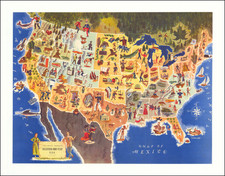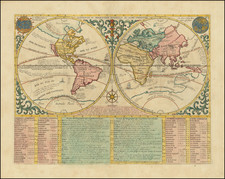Soviet Perspectives on the US: As a Parasitic Hermit Crab.
An intriguing pair of Cold War-era Soviet propaganda pieces, specifically targeting the formation and activities of military alliances or blocs. This form of political communication was a common tool used during the Cold War to influence public perception.
The world map on the first sheet represents the United States as a large hermit crab, a rather unusual but intriguing choice of symbolism. Hermit crabs are known for their behavior of occupying shells (and other structures) abandoned by other creatures, which might be symbolizing the United States' influence or interference in other countries' affairs.
The accompanying sheet provides a detailed list of various military blocs, highlighting the extent of imperialistic alliances across the world. From NATO (North Atlantic Treaty Organization) to SEATO (Southeast Asia Treaty Organization), it represents these alliances as mechanisms of imperialism.
The piece dates from the late-Soviet era, identifiable through the mention of the Strategic Defense Initiative, or the Star Wars Program, which commenced under Reagan.
Here are some translations of the terms used in the key and map:
"ВОЕННЫЕ БЛОКИ-ОПЛОТ МИЛИТАРИЗМА" - "Military Blocs - Bastion of Militarism"
"Империалистические Державы стремятся координировать свою экономическую, политическую и идеологическую стратегию, пытаются создать общий фронт борьбы против социализма" - "Imperialist powers seek to coordinate their economic, political, and ideological strategy, trying to create a common front against socialism."
"Условные обозначения" - "Conventions"
"действующие блоки" - "active blocs"
"блоки, прекратившие существование" - "blocs that have ceased to exist"
"планируемые блоки" - "planned blocs"
"прямое участие США" - "direct participation of the USA"
"косвенное участие США в блоке" - "indirect participation of the USA in the bloc"
The list on the second sheet details various military alliances (like NATO, SEATO, etc.) and their member countries. This would have been intended to portray the United States and its allies as aggressive and imperialistic, with the "spider web" of military alliances being depicted as a threat to other nations. This form of anti-Western sentiment was a common theme in Soviet propaganda during the Cold War era.
The posters are labeled 2 and 3, suggesting that they are from a larger set of items.









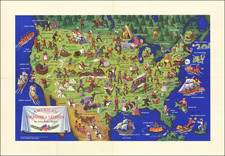
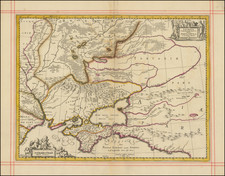
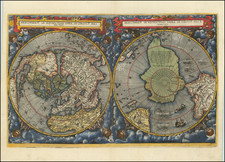
![(Early Photographic Facsimile of the Mappamundi of Tunuslu Hajji Ahmed) Kemãl ile Naks Olinmis Cümle-I Cihãn Nemunesi [Fully Illustrated Exposition of the World in Its Entirety]](https://storage.googleapis.com/raremaps/img/small/66562.jpg)
